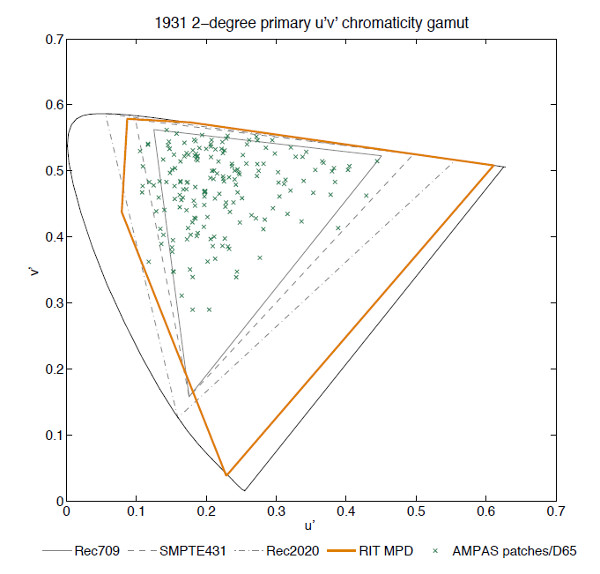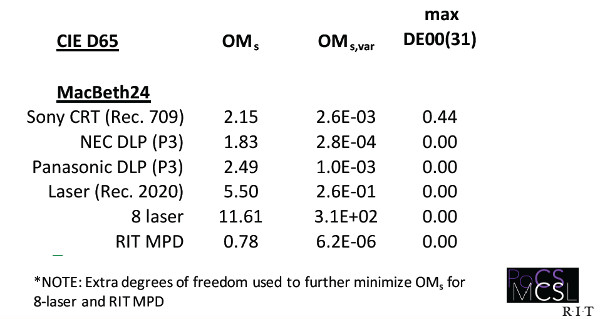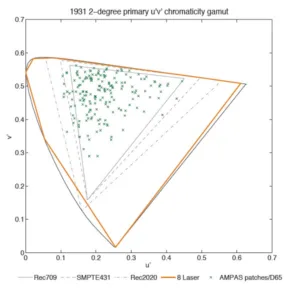It is possible for a variety of spectrally unique (and different) stimuli to produce identical visual responses. Spectrally variant color stimuli that are perceived identically are known as metamers. With display-rendered imagery, the objective is to take advantage of the limitations of the human visual system using a limited subset of emissive primaries (RGB) to render metameric matches of real scenes, effectively fooling the human visual system.
David Long from the Rochester Institute of Technology (RIT) is a well known and respected color scientist and educator. At the SMPTE conference, he provided an update on his research into metamerism. Metamerism is becoming more important as the technology moves from broadband lighting sources for displays to narrow band sources, particularly, lasers. Metameric failure occurs when two colors are perceived differently by two people (this definition was disputed in a conversation I had this week with another colour scientist, although the term is being widely used with this meaning – Man. Ed.) With laser sources, the potential for metameric failure increases compared to broadband sources, which is of particular concern for RGB laser sources used in digital cinemas.
At RIT, they are developing models of multi-primary solutions to understand how different solutions impact the display of colors and the color volume, but also how these systems impact human perception and susceptibility to metameric failure.
For example, RIT has modeled an 8-primary display as well as a 7-primary display, which has actually been built as a prototype. Both do a great job of creating a very large color volume, but the 7-primary, called the MPD, does a better job of reducing metameric failure. The figures below show the color gamut coverage of the two multi-primary displays.

The results of their analysis are shown in the table below. OMs is the measure of metameric failure with a lower number being better. Note how poorly the 8-laser system performs, even with the largest color gamut.

Long said their research is also focused on how to optimize the primaries for the 2020 color gamut in order to reduce the potential for metameric failure. We asked when he might be ready to make recommendations on optimized primaries and he said, “soon.” This will be good input along with other input done by 3M that looks at the tolerances for potential primaries. Hopefully, this will lead to a revised 2020 color standard with metameric-optimized primaries and tolerances so display makers can focus on creating 2020-certified displays.

